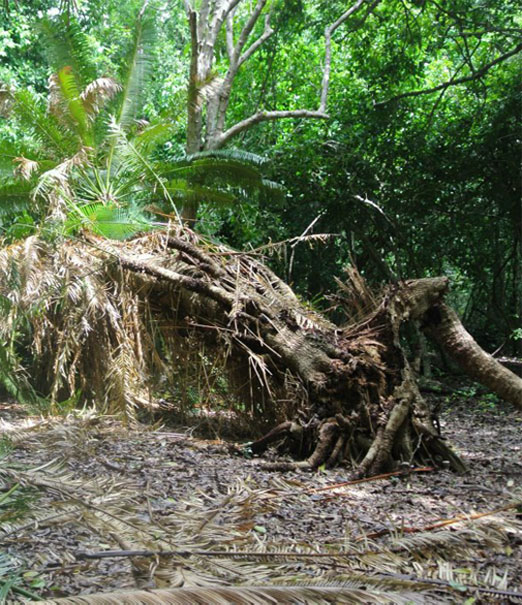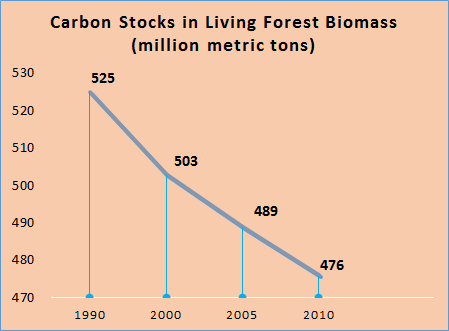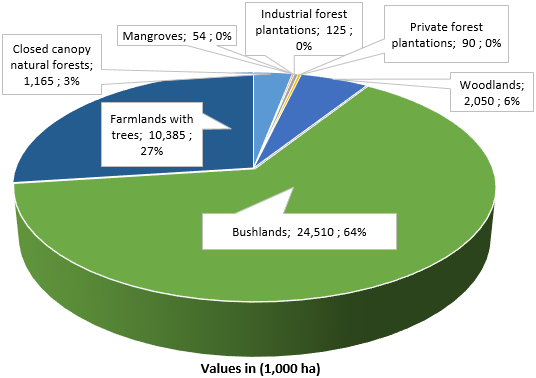
Nairobi Area: 581,309 km2
48 Million (2015 estimation)
Male 57, Female 59 years
6.5 Million Ha Equivalent to
7.9% of Total Land Area of
66.9 Million Hectares
Consumption: 41.7 Million m3/year
Supply: 31.4 Million m3/year
Deficit: 10.3 Million m3/year

Forest means a land area of more than 0.5 ha, tree crown cover of 10%, with trees of at least 2.5m height, which is not primarily under agricultural or other specific non-forest land use.
About 7% of Kenya’s total land area is forest. These forests provide goods and services such as wildlife habitat, biological diversity, water catchment, employment opportunities and livelihood sources. Forests and trees play multiple functions in contributing to the livelihoods of communities, especially women and marginal groups, in supplying food and rural energy.However, these forests are threatened with agricultural expansion, over-exploitation and unsustainable use of forest resources; population increase and widespread youth unemployment have led to increased pressure on forest resources.
According to the last inventory undertaken in 2010 (KFS, 2013a), forests in Kenya occupy 6.99% of the land area. These forests are categorised as Montane, Western rain forest, Bamboo, Afro-montane undifferentiated forest, Coastal and Dryland forests. The montane forest and the coastal forest regions are the most forested with 18% and 10% forest cover, respectively. Natural forests in Kenya are made up of montane forests, which occupy about 2% of the total land area (1.14 million hectares). A considerable area of 2.13 million hectares consists of bush land and mangroves. Public and private plantations constitute 220,000 hectares (FAO, 2015d).
Analysis of change in forest cover over the last 25 years revealed improved afforestation activities. Forest land has decreased by 311,000 ha while crop land increased by 1,018,000 ha between 1990 and 2015. Between 1990 and 2000, Kenya lost approximately 1.2 million ha of forest land, equivalent to 25% of forest cover. However, there is a remarkable increase in forest cover from 6.01% in 2000 to the predicted 7.46% in 2015. This is equivalent to an annual increase of 0.1%. Most (77%) of the forest land in Kenya is under community and private ownership while 23% is public. Private plantations cover 47% of the total forest plantation area, which is almost equal to the area of stocked plantations under public management (53%).
Kenya has, a National Forest Programme 2016-2013 which was developed to increase forest cover, boost the forest sector’s contribution to the national economy, enhance resilience to climate change and improve livelihoods. This programme will significantly enhance not only sustainable forest management but also improve the coordination of various sectors.

Most of the forest land in Kenya is under community and private ownership (77%) while the rest are under public (23%). Private plantations cover 47% of the total forest plantation area, which is almost equal to the area of stocked plantations under public management (53%)

18,000 people are directly employed by the forestry sector, according to 2011 FAO data.
The forestry sector contributed USD 365.1 million to the economy in 2011, which is approximately 1.2% of the GDP.
The demand for building construction, furnishing and other end uses for forest products have grown faster than the supply from Kenya’s forests, resulting in an increase in net imports. The two main direct value addition industries from wood from Kenya’s forests are saw mills and plywood industries
Between 1990 and 2000, Kenya lost approximately 1.2 million ha of forest land, equivalent to 25% of forest cover.

48 Million Ha Equivalent to
54.4% of Total Land Area of
88.3 Million Hectares
41 Million Ha Equivalent to
51.4% of Total Land Area of
77.9 Million Hectares
4.7 Million Ha Equivalent to
24% of Total Land Area of
19.7 Million Hectares
12.3 Million Ha Equivalent to
15.7% of Total Land Area of
1.112 Million Hectares